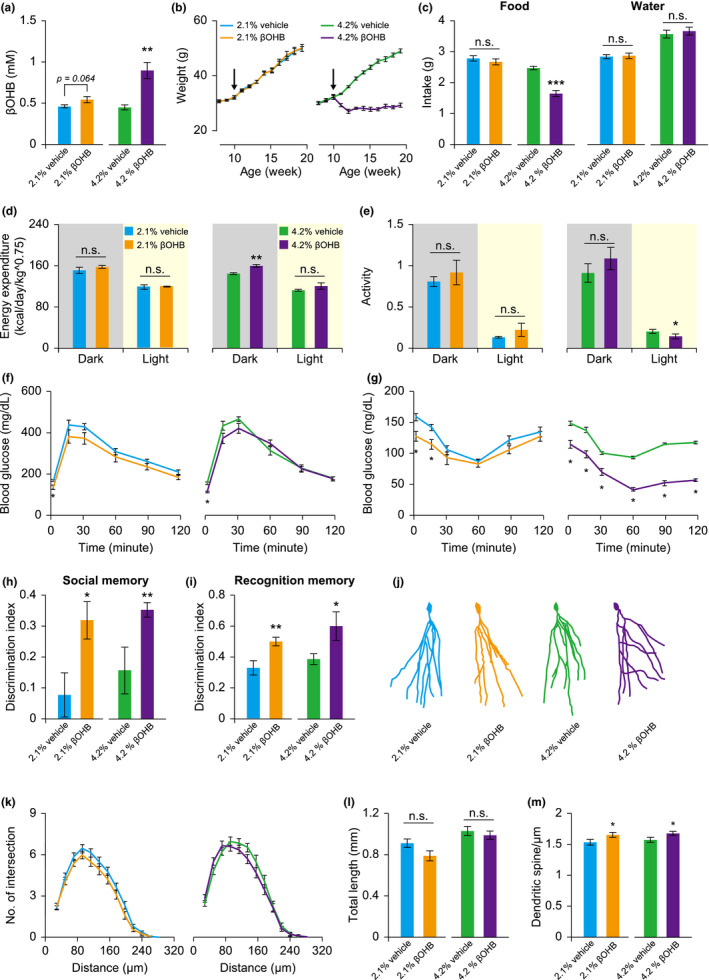FIGURE 6.

βOHB administration improves metabolic health and memory performance of mice. Mice fed on a high‐fat diet were treated with different concentrations of βOHB and/or vehicle from 10 weeks of age (arrow). Metabolic health and behavioral tests were carried out between 16 and 24 weeks of age. (a–c) Circulating βOHB (a), body weight (b), and food and water intake (c) were monitored and analyzed. (d, e) Energy expenditure (d), and spontaneous locomotor activity (e) were analyzed in mice receiving vehicle and βOHB treatments. (f, g) Glucose tolerance test (f) and insulin tolerance test (g) were conducted in mice receiving vehicle and βOHB treatments. (h, i) Memory performance of mice was evaluated using a 3‐chamber social test (h) and novel object recognition test (i), respectively. (j–m) DG granule cells were reconstructed (j), and the dendritic profile (k), dendritic length (l), and spine density of distal dendrites (m) were analyzed. Data are expressed as mean ± SEM (n = 4–5 for whole‐body metabolic analyses, n = 8–10 mice for behavioral and the other tests, n = 26–39 neurons, and 30–31 dendritic segments for structural analyses). Not significant (n.s.), *p < 0.05, **p < 0.01, ***p < 0.001 compared to the control group by Student's t test
